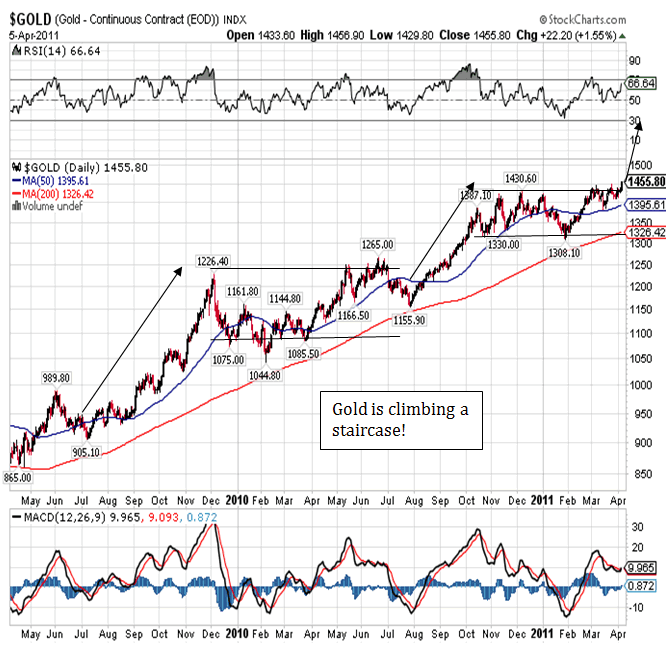A few months ago most analysts were skeptical about $1500 an ounce for gold by end of 2010, however, the recent rally in gold coupled with economic uncertainties have forced those who earlier disputed the bullish forecasts to jump on the bandwagon, according to Jeffrey Nichols, Senior Economic Advisor to Rosland Capital and Managing Director of American Precious Metals Advisors.
US inflationary policies: The US monetary and fiscal policies are inflation. Official federal debt, now around $12.8 trillion is only a small part of Washington's actual obligations. Off-budget and unfunded future liabilities are another $108 trillion, Jeff Nicols said. So the end result would be higher inflation, currency depreciation and higher gold prices.European crisis: Europe's sovereign debt crisis will continue to favour gold. The European Central Bank's loss of anti-inflationary credibility and the questionable future of the euro has diminished the European common currency's appeal as a reserve asset and dollar-substitute in the world economic order.
Central Banks and gold buying: Central banks have become net buyers since 2009 after several years of selling an average 400 tons per year. And official sector will continue to be net buyer of gold for years to come, Jeff Nichols said. Last year, the People's Bank of China (PBOC) announced it had been buying gold regularly from domestic mine production for several years - but did not report these purchases in its official reserve accounts.
Rising investment demand: Rising private-sector investment demand for gold from across the old industrialized world: Private investors in the United States and Europe, both individuals and institutions, are buying more gold reflecting the same concerns and fears that are driving central banks to accumulate the metal. Substantial physical investment demand is seen across Germany, Switzerland, France, the UK and other countries, Jeff Nichols said.
India, China investment demand: Moderate growth in disposable personal incomes could result in rising gold purchases in China and India where gold is a preferred medium of investment and savings for households.
Rise of ETFs: The growth of gold exchange-traded funds allow investors to purchase gold via an equity-like vehicle and there are more than 18 such funds traded on many stock exchanges around the world- and a new gold ETF is just now being launched in Japan. Jeff Nichols said these new products and distribution channels will result in far more gold investment offtake in the years ahead, so much so that the potential future price is far greater than most analysts and investors today think reasonable.
Declining world gold-mine production: Global gold-mine production has been in a downtrend for decades. Despite a small uptick last year and possibly again this year, the fall in world mine output will continue for at least for the next five years or more.
The ebb in mine production reflects many factors, including the depletion of existing deposits, the continuing drop in ore grades, the decline in operating depths at many mines, the rise in energy and labor costs, the expense and time required to meet increasingly restrictive environmental regulations, unfriendly government attitudes toward foreign investment in some gold-producing countries, and the lack of financing available to many gold-mining exploration and development, Jeff Nichols concluded.
ORIGINAL SOURCE
This material is for informational purposes only. Although it is obtained from sources believed to be reliable, Leland National Gold does not guarantee its accuracy, or being all-inclusive. Past performance is no guarantee of future results. There are risks in buying and selling physical metals. The potential for loss as well as gain increases by leveraging physical precious metals transactions. Never trade with more money than you can afford to lose, and always be sure to read the Risk Disclosure provided in your account documents



















